From apples to zucchini, add something unusual to your 5 A DAY with our alphabet of fruit!
Download your free 5 A DAY poster
A | B | C | D | E | F | G | H | K | L | M | N | O | P | Q | R | S | T | U | V | W | Z
 Granny Smith, Royal Gala, Golden Delicious and Pink Lady are just a few of the thousands of kinds of apple that are grown around the world. Dried apple rings make a healthy snack – remove the core, thinly slice the apple and bake the rings in the oven at a low heat for about an hour.
Granny Smith, Royal Gala, Golden Delicious and Pink Lady are just a few of the thousands of kinds of apple that are grown around the world. Dried apple rings make a healthy snack – remove the core, thinly slice the apple and bake the rings in the oven at a low heat for about an hour.
 Apricots can be eaten fresh or dried – both are packed with vitamins. Fresh apricots have a soft and slightly furry skin. They are high in beta-carotene, which keeps our eyes and skin healthy.
Apricots can be eaten fresh or dried – both are packed with vitamins. Fresh apricots have a soft and slightly furry skin. They are high in beta-carotene, which keeps our eyes and skin healthy.
 Most aubergines are teardrop-shaped and have glossy purple skin. On the inside, they are spongy and creamy-white. Aubergines grow on bushes and really are fruit – although you wouldn’t want to eat them raw! Perhaps cooked in a Thai chicken curry? Australians and Americans call it eggplant because some types look a bit like large eggs.
Most aubergines are teardrop-shaped and have glossy purple skin. On the inside, they are spongy and creamy-white. Aubergines grow on bushes and really are fruit – although you wouldn’t want to eat them raw! Perhaps cooked in a Thai chicken curry? Australians and Americans call it eggplant because some types look a bit like large eggs.
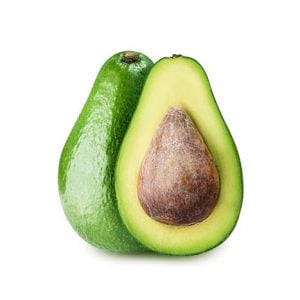 Sometimes called an avocado pear, this fruit is often mistakenly described as a vegetable because we eat it in salads. Avocados are at their best when they are ripe. They’re really easy to prepare – simply cut one in half, remove the stone and eat with a little salad dressing or chopped into a salad. Avocados are a good source of essential fats (yes, the good ones) and are one of the few fruits that contain fat.
Sometimes called an avocado pear, this fruit is often mistakenly described as a vegetable because we eat it in salads. Avocados are at their best when they are ripe. They’re really easy to prepare – simply cut one in half, remove the stone and eat with a little salad dressing or chopped into a salad. Avocados are a good source of essential fats (yes, the good ones) and are one of the few fruits that contain fat.
 A great snack in a handy yellow skin! Bananas are a good source of energy and contain lots of vitamins and minerals, especially potassium, which is important for the health of cells, nerves and muscles, and helps to lower blood pressure. Bananas grow in hanging clusters, sometimes called hands, in tropical regions. You can eat them raw, baked, dried or in a smoothie. Or try mashed banana on wholegrain toast – it’s delicious!
A great snack in a handy yellow skin! Bananas are a good source of energy and contain lots of vitamins and minerals, especially potassium, which is important for the health of cells, nerves and muscles, and helps to lower blood pressure. Bananas grow in hanging clusters, sometimes called hands, in tropical regions. You can eat them raw, baked, dried or in a smoothie. Or try mashed banana on wholegrain toast – it’s delicious!
 Butternut squash is a large and pear-shaped fruit with a golden-brown to yellow skin. Because it contains seeds, it is actually a fruit rather than a vegetable. Once peeled and cooked, the flesh is soft and sweet. It can be roasted, pureed, mashed or used in soups or casseroles. It’s a good source of beta-carotene, which is turned into vitamin A in the body. Beta-carotene gives the flesh its bright orange colour. Bulk up a spaghetti bolognese by adding some butternut squash.
Butternut squash is a large and pear-shaped fruit with a golden-brown to yellow skin. Because it contains seeds, it is actually a fruit rather than a vegetable. Once peeled and cooked, the flesh is soft and sweet. It can be roasted, pureed, mashed or used in soups or casseroles. It’s a good source of beta-carotene, which is turned into vitamin A in the body. Beta-carotene gives the flesh its bright orange colour. Bulk up a spaghetti bolognese by adding some butternut squash.
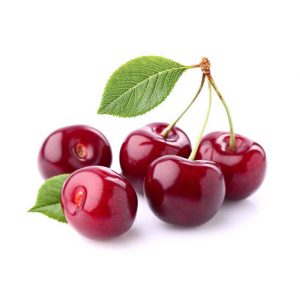 Cherries grow from stalks in pairs and a tree can produce fruit for as long as 100 years! Sweet varieties such as the Bing cherry are nicest on their own or in a fruit salad. Sour cherries like Morello are tastier cooked.
Cherries grow from stalks in pairs and a tree can produce fruit for as long as 100 years! Sweet varieties such as the Bing cherry are nicest on their own or in a fruit salad. Sour cherries like Morello are tastier cooked.
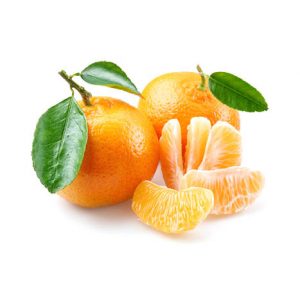 This citrus fruit is the smallest of the tangerines. The skin of clementines can be peeled away easily and the segments don’t contain pips, which makes them a lot less messy to eat than some other varieties. Citrus fruits are a good source of vitamin C.
This citrus fruit is the smallest of the tangerines. The skin of clementines can be peeled away easily and the segments don’t contain pips, which makes them a lot less messy to eat than some other varieties. Citrus fruits are a good source of vitamin C.
 These fruits come from the date palm tree and grow abundantly in Egypt. Dried dates make a super-sweet snack and are full of fibre. They can be chopped and sprinkled on cereal or baked into a muffin.
These fruits come from the date palm tree and grow abundantly in Egypt. Dried dates make a super-sweet snack and are full of fibre. They can be chopped and sprinkled on cereal or baked into a muffin.
 These little, almost black berries grow on bushes all over the UK countryside in summer. They are not good to eat raw but are berry nice cooked with other fruits in desserts, or used to make jam. You can also make elderberry cordial. Try our berry sparkle at your next birthday party.
These little, almost black berries grow on bushes all over the UK countryside in summer. They are not good to eat raw but are berry nice cooked with other fruits in desserts, or used to make jam. You can also make elderberry cordial. Try our berry sparkle at your next birthday party.
 Figs are soft, sweet fruits, full of small seeds, and they’re a great source of fibre. The skin is very thin – ripe figs do not keep or travel very well, so they are often eaten dried. Fresh figs are delicious as a snack, especially with Greek yoghurt and a drizzle of honey. Jams and chutneys are often made from figs.
Figs are soft, sweet fruits, full of small seeds, and they’re a great source of fibre. The skin is very thin – ripe figs do not keep or travel very well, so they are often eaten dried. Fresh figs are delicious as a snack, especially with Greek yoghurt and a drizzle of honey. Jams and chutneys are often made from figs.
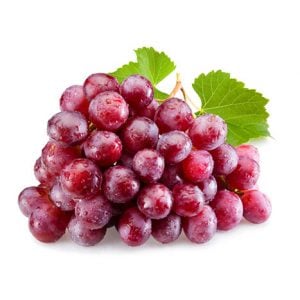 Red, green or purple, these fruits grow in bunches on vines. On the inside, they are sweet, juicy and jelly-like. Green grapes are also called white grapes and are dried to make sultanas. Purple, or black, grapes are dried to make raisins. Red grapes make delicious juice.
Red, green or purple, these fruits grow in bunches on vines. On the inside, they are sweet, juicy and jelly-like. Green grapes are also called white grapes and are dried to make sultanas. Purple, or black, grapes are dried to make raisins. Red grapes make delicious juice.
 The guava fruit is widely grown in tropical and sub-tropical regions. It can be round or pear-shaped, with a thin skin that is green and turns yellow as it ripens. The flesh can be white or even pink, and the seeds can be eaten. Guava contain vitamin C and lots of beta-carotene, which forms vitamin A in the body.
The guava fruit is widely grown in tropical and sub-tropical regions. It can be round or pear-shaped, with a thin skin that is green and turns yellow as it ripens. The flesh can be white or even pink, and the seeds can be eaten. Guava contain vitamin C and lots of beta-carotene, which forms vitamin A in the body.
 These bright yellow fruits grow on trailing vines along the ground. There are thousands of different kinds of melon – they all have a hard outside, which you can’t eat, and a juicy sweet inside that is delicious to eat straight from the fridge on a hot day.
These bright yellow fruits grow on trailing vines along the ground. There are thousands of different kinds of melon – they all have a hard outside, which you can’t eat, and a juicy sweet inside that is delicious to eat straight from the fridge on a hot day.
 Hairy on the outside and soft in the middle, the kiwi is one of the few fruits that are green when ripe. One kiwi fruit contains all the vitamin C you need for the whole day. Vitamin C helps your body to heal cuts and bruises, and to fight colds.
Hairy on the outside and soft in the middle, the kiwi is one of the few fruits that are green when ripe. One kiwi fruit contains all the vitamin C you need for the whole day. Vitamin C helps your body to heal cuts and bruises, and to fight colds.
 In 1747, Scottish doctor James Lind proved that eating citrus fruit can prevent scurvy. Today, lemons are still a great source of vitamin C. You can squeeze out the juice and mix it with water to make a zingy drink or use lemon to boost the flavour in savoury dishes such as risotto.
In 1747, Scottish doctor James Lind proved that eating citrus fruit can prevent scurvy. Today, lemons are still a great source of vitamin C. You can squeeze out the juice and mix it with water to make a zingy drink or use lemon to boost the flavour in savoury dishes such as risotto.
 Mangoes come in different shapes and sizes. Peel off the skin to eat the soft, juicy flesh inside. India grows the most mangoes in the world. There are more than 2,500 different kinds of mango and they are an excellent source of vitamin C. Why not add some to your next stir-fry?
Mangoes come in different shapes and sizes. Peel off the skin to eat the soft, juicy flesh inside. India grows the most mangoes in the world. There are more than 2,500 different kinds of mango and they are an excellent source of vitamin C. Why not add some to your next stir-fry?
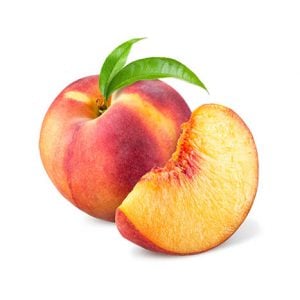 A type of peach with a thin smooth skin and firm flesh. Be very gentle with them! They can bruise easily and the fruit will go bad where the bruise is.
A type of peach with a thin smooth skin and firm flesh. Be very gentle with them! They can bruise easily and the fruit will go bad where the bruise is.
 If green olives are left on the tree, they turn black. Olives come in many sizes and flavours, so experiment to find the ones you prefer.
If green olives are left on the tree, they turn black. Olives come in many sizes and flavours, so experiment to find the ones you prefer.
 One of the most popular fruits in the world. They grow well in countries such as Spain and Italy, where for much of the year it’s hot and sunny during the day and cooler at night. A glass of pure orange juice counts as one of your 5 A DAY. Try cutting an orange into quarters and freezing it to make a healthy icy treat. Chocolate and orange is a great flavour combination!
One of the most popular fruits in the world. They grow well in countries such as Spain and Italy, where for much of the year it’s hot and sunny during the day and cooler at night. A glass of pure orange juice counts as one of your 5 A DAY. Try cutting an orange into quarters and freezing it to make a healthy icy treat. Chocolate and orange is a great flavour combination!
 These are from the same family as apples but are softer. They can be yellow, green, reddish or brown on the outside but they all have white, juicy flesh inside. One of the best-loved English pears is called Conference.
These are from the same family as apples but are softer. They can be yellow, green, reddish or brown on the outside but they all have white, juicy flesh inside. One of the best-loved English pears is called Conference.
 You may well recognise red, yellow, green and orange peppers, but did you know that some are even white or purple? If you’re not fond of the way one colour tastes, try another. The green ones are less sweet – red peppers are actually ripened green peppers. They are delicious roasted!
You may well recognise red, yellow, green and orange peppers, but did you know that some are even white or purple? If you’re not fond of the way one colour tastes, try another. The green ones are less sweet – red peppers are actually ripened green peppers. They are delicious roasted!
 It can take two years to grow a pineapple – so savour them! This rough, spiky fruit is actually made up of lots of smaller fruits that have stuck together. Early explorers chose the name because they thought the fruit looked like a pinecone.
It can take two years to grow a pineapple – so savour them! This rough, spiky fruit is actually made up of lots of smaller fruits that have stuck together. Early explorers chose the name because they thought the fruit looked like a pinecone.
 Although we associate pumpkins with Halloween, they’re a versatile fruit that can be boiled, baked, roasted or mashed, and make delicious soups and the classic American pumpkin pie. They have plenty of beta-carotene, which is turned into vitamin A in our bodies. It is the beta-carotene that gives pumpkins their orange colour. Pumpkin seeds can be roasted and eaten as a tasty snack, or sprinkled over yoghurt, and are a good source of essential fatty acids – the good fats.
Although we associate pumpkins with Halloween, they’re a versatile fruit that can be boiled, baked, roasted or mashed, and make delicious soups and the classic American pumpkin pie. They have plenty of beta-carotene, which is turned into vitamin A in our bodies. It is the beta-carotene that gives pumpkins their orange colour. Pumpkin seeds can be roasted and eaten as a tasty snack, or sprinkled over yoghurt, and are a good source of essential fatty acids – the good fats.
 This fruit comes from the same family as the pear, but it can’t be eaten raw. Slices of quince go well with apple, in desserts such as apple crumble. Quince smells of perfume when cooked, and some people use it as an air freshener for their home or car.
This fruit comes from the same family as the pear, but it can’t be eaten raw. Slices of quince go well with apple, in desserts such as apple crumble. Quince smells of perfume when cooked, and some people use it as an air freshener for their home or car.
 Nearly half of all the world’s raisins come from California in the USA. Raisins are black grapes that have been dried in the sun. Sultanas are made the same way, but with green grapes. Mini boxes of raisins are perfect for snacking on the go, or try our oatmeal and raisin scones.
Nearly half of all the world’s raisins come from California in the USA. Raisins are black grapes that have been dried in the sun. Sultanas are made the same way, but with green grapes. Mini boxes of raisins are perfect for snacking on the go, or try our oatmeal and raisin scones.
 Satsumas, like clementines and mandarins, are types of tangerine. They grow on trees and they grow best in warm weather. The heavier the fruit, the juicier it is.
Satsumas, like clementines and mandarins, are types of tangerine. They grow on trees and they grow best in warm weather. The heavier the fruit, the juicier it is.
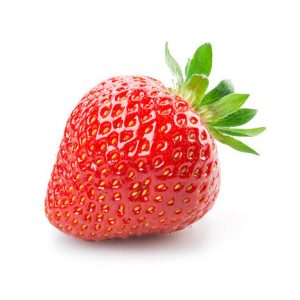 Anyone for tennis? Followed by strawberries of course. Around 25,000kg of strawberries are eaten at the famous Wimbledon tennis tournament each year. The strawberry is actually a member of the rose family! They are the only fruit to have their seeds on the outside – one strawberry can have as many as 200. Make your dinner party blossom with our individual apple and strawberry crumbles.
Anyone for tennis? Followed by strawberries of course. Around 25,000kg of strawberries are eaten at the famous Wimbledon tennis tournament each year. The strawberry is actually a member of the rose family! They are the only fruit to have their seeds on the outside – one strawberry can have as many as 200. Make your dinner party blossom with our individual apple and strawberry crumbles.
 Is it a fruit or a vegetable? It’s definitely a fruit. Take your pick from well-known cherry, beef or plum toms, but keep a lookout for exciting Caspian Pink, Big Mama and Sunrise Bumble Bee varieties. Pop some small, sweet tomatoes in salads or lunchboxes. Tomatoes are easy to grow in a pot in the garden or on a windowsill, too.
Is it a fruit or a vegetable? It’s definitely a fruit. Take your pick from well-known cherry, beef or plum toms, but keep a lookout for exciting Caspian Pink, Big Mama and Sunrise Bumble Bee varieties. Pop some small, sweet tomatoes in salads or lunchboxes. Tomatoes are easy to grow in a pot in the garden or on a windowsill, too.
 An ugli fruit is a cross between a grapefruit and a mandarin. It is about the size of a grapefruit but it tastes a bit sweeter and has a wrinkly skin that peels easily. This fruit comes from Jamaica and is also grown in the USA. Despite its name, it’s not that ugly although it can look strange because its yellowy-green skin is thick, rough and puffy, and sometimes a bit blotchy.
An ugli fruit is a cross between a grapefruit and a mandarin. It is about the size of a grapefruit but it tastes a bit sweeter and has a wrinkly skin that peels easily. This fruit comes from Jamaica and is also grown in the USA. Despite its name, it’s not that ugly although it can look strange because its yellowy-green skin is thick, rough and puffy, and sometimes a bit blotchy.
 Plums come in all sorts of colours but Victoria plums are dark red. They are grown in England and are sweet when eaten raw or can be cooked in tarts and crumbles.
Plums come in all sorts of colours but Victoria plums are dark red. They are grown in England and are sweet when eaten raw or can be cooked in tarts and crumbles.
 Watermelons grow along the ground and they can be enormous. They contain lots of water and make a refreshing snack. The flesh is usually pink as it is high in lycopene, an antioxidant.
Watermelons grow along the ground and they can be enormous. They contain lots of water and make a refreshing snack. The flesh is usually pink as it is high in lycopene, an antioxidant.
 The American name for a courgette. Courgettes come from the squash family and grow into marrows if not picked early. They look quite like cucumbers, have very soft seeds and can be cooked with onions, tomatoes, aubergines and peppers to make ratatouille. Don’t add them to your fruit salad!
The American name for a courgette. Courgettes come from the squash family and grow into marrows if not picked early. They look quite like cucumbers, have very soft seeds and can be cooked with onions, tomatoes, aubergines and peppers to make ratatouille. Don’t add them to your fruit salad!